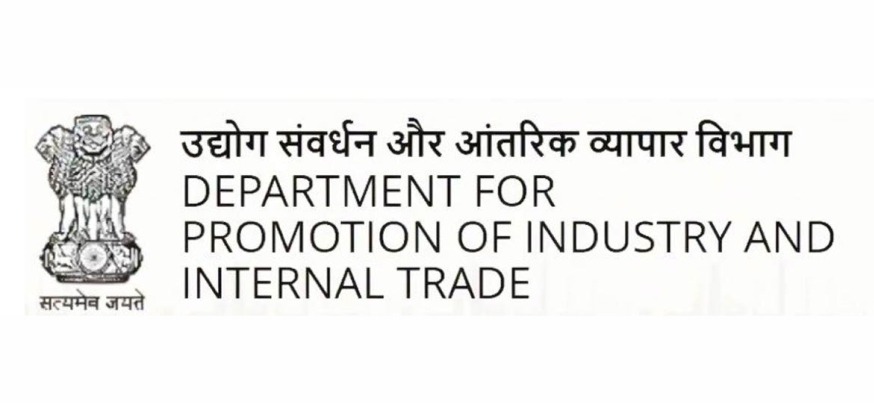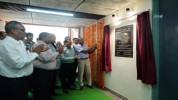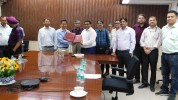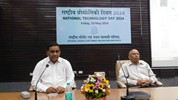

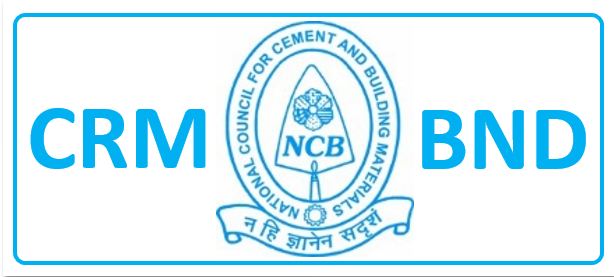
News & Events
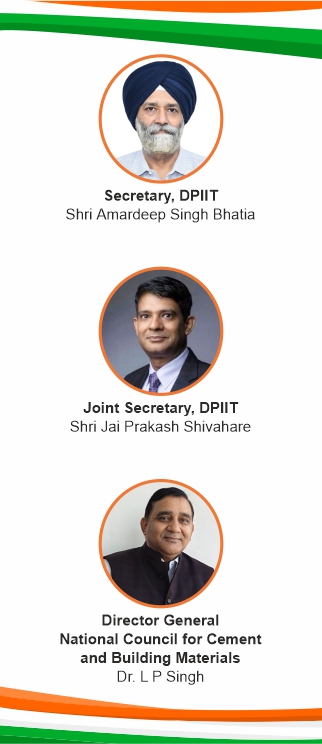
News & Events
- Corrigendum-Upgradation of the Industrial Shed in NCB Campus, Ballabgarh, Haryana on EPC Mode
- Tender Notice-Upgradation of the Industrial Shed in NCB Campus, Ballabgarh, Haryana on EPC Mode
- NCB IC Event: Innovate Youth: Building Tomorrow's Entrepreneurs.
Consultancy services for getting NABL Accreditation as per ISO/IEC 17025:2017
Notice on Public Grievance
NCB – CCE EVENTS / Forthcoming Training Programmes
Proficiency Testing Schemes
NCCBM to host 17th International Congress on Chemistry of Cement (ICCC) in 2027 in New Delhi
सीमेंट अनुसंधान एवं स्वतंत्र परीक्षण केंद्र (सीआरटी)
Centre for Cement Research and Independent Testing (CRT)
Download PDF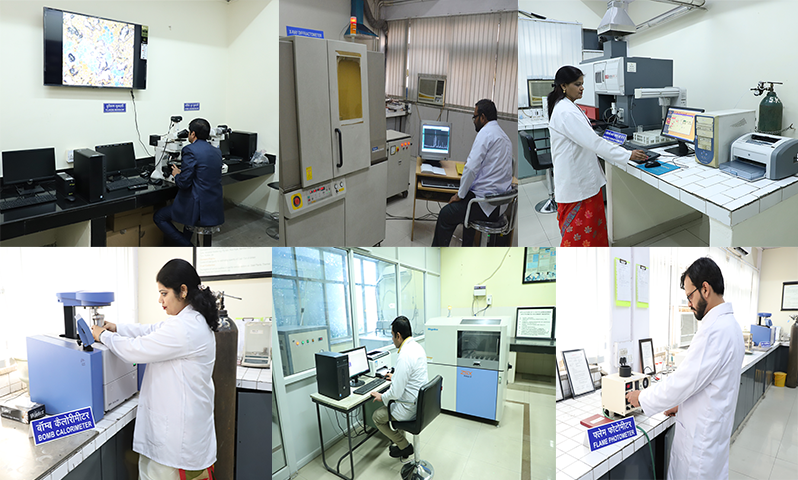
Research Areas
Cement and Other Binders (COB)
Main area of activities under the R&D programme
- Establishing Limestone Consumption Factor
- Characterization and evaluation of raw materials and fuels
- Optimization of raw mix design for improved quality of clinker
- Utilization of marginal/low grade limestone in the manufacture of cement and building materials
- Development of special and energy saving cements
- Evolving cement based composite formulations for shotcreting with reduced rebound losses and rapid repairs
- Improving clinker/cement quality
- Investigations on lump formation in cement silo/bags and remedial measures
- Effect of minor constituents on clinker/cement quality
- Optimization of SO3 content in cement
- Studies on use of mineralizers in clinkerization
- Development of newer cements and their specifications such as Composite Cement, High Volume Flyash Cement and Portland Limestone Cement.
Achievements
- Carried out about 235 LCF studies
- Meeting delivery schedules and targeted quality of delivered cement through minimizing/ eliminating lump formation in silos/bags for 6 cement plants.
- Utilizing low grade limestone, fly ash and additives in cement manufacturing through optimization of raw mix design for 44 cement plants.
- Achieving desired setting time and early strength through optimization of clinker quality, particle size distribution and SO3
- Increasing fly ash content in PPC by 5-10% through optimization of raw mix design.
Waste Utilization (WAU)
Main area of activities under the R & D programme
- Utilization of industrial wastes such as fly ash from thermal power plants and granulated blast furnace slag from iron and steel industries in the manufacture of Portland Pozzolan Cement (PPC) and Portland Slag Cement (PSC)
- Enhancing the fly ash content in PPC by adopting activation of fly ash through different routes.
- Use of low grade materials and mine rejects in development of synthetic slag having properties comparable to granulated blast furnace slag conforming to IS:12089-1987
- Utilization of industrial by-products such as lead-zinc slag, copper slag, LD slag etc from metallurgical industries, spent pot lining (SPL) waste from alumina industry, jarosite from zinc industry, barium sludge from chemical industry as raw material/ mineralizer in the manufacture of OPC.
- Use of “jarosite”, a by-product of zinc industry as partial substitute of conventional mineral gypsum in controlling cement setting.
- Study on the utilization of different types of slags generated at non-ferrous metallurgical industries such as lead-zinc slag, copper slag, LD slag, E-cat, a waste generated at petroleum refinery and marble dust from marble processing industries as mineral additive and blending component in the manufacture of cement.
- Development of kiln furniture and pottery wares by using catalytic waste generated at petroleum refinery.
- Developmental studies on plaster coating, tiles, bricks, blocks etc using industrial wastes such as marble slurry, fly ash, red mud, chemical gypsum etc.
Achievements
- Lead-Zinc slag utilization up to 6% as raw mix component and 5% as performance improver in OPC
- Copper slag utilization up to 2.5% as raw mix component and 5% as performance improver in OPC
- Steel slag utilization up to 2% as raw mix component and 5% as performance improver in OPC
- Spent Pot Lining (SPL) waste utilization up to 1.5% as raw mix component
- Development of technology for lime flyash bricks
- Red mud utilization up to 4% as raw mix component
- E-cat from petroleum refinery utilization up to 10% in the manufacture of blended cement
- Marble dust from marble industry utilization up to 5-15% as raw mix component
- Soda Ash sludge from Soda Ash industry utilization up to 6 to 25% as raw mix component
- Lime sludges from different industries utilization up to 25 to 70% as raw mix component
- Jarosite utilization up to 1.5% as raw mix component and also as partial substitute of mineral gypsum in controlling cement setting
- Synthetic gypsum from marble waste
- Light weight sintered aggregate based on 99.5% industrial wastes for construction industries
Refractories and Ceramics (REC)
Main areas of activities under the R&D programme
- Diagnostics studies/investigations related to:
- Premature refractory failures in cement rotary kilns
- Damage assessment during shipment of refractories
- Quality evaluation of fresh refractories lot at cement/refractory plant
- Kiln shell corrosion
- Loosening of brick rings in cement rotary kiln during operation
- Coating and build up formation/ring formation.
- Refractory management studies and optimization of refractory lining performance
- Development and technology transfer of refectory products
- High temperature investigations
- Devitrification studies of slag, alumino silicates etc
- Studies on refractory-raw mix interaction
- Technical suitability of industrial wastes in refractory and ceramic industries
- Comprehensive thermal investigation of refractories using state-of-art equipments such as heating microscope, thermal analyzer, PCE, RUL, Thermal Spalling, PLC etc.
Achievements
- Developed high performance refractory products for cement plants
- Alumina Zircon Refractory (AZR) bricks for transition zone
- Magnesia Spinelide Refractory (MSR) bricks for burning zone
- High strength insulating bricks for preheating zone
- Coating repellent castables for build up prone areas
- Use of NCB-AZR bricks in rotary kiln improved productivity by up to 10%
- Trouble shooting services to 20 cement plants with following benefits
- Kiln uptime increase by up to 12%
- Fuel consumption reduction by 2-3%
- Lining performance synchronization for 1 year
- Trouble free kiln operation
Fundamental and Basic Research (FBR)
Main areas of activities under the R&D programme
- Exploratory studies related to the material science
- Studies on effect of mineral admixtures on cement hydration
- Studies on microstructural development in cement mineral admixtures blends
- Application of nano technology for enhancing the cement performance
- Development of novel cement systems and additives such as geopolymer i.e cement and concrete.
Independent Testing (INT)
Independent Testing Laboratories undertake complete physical, chemical, mineralogical and micro-structural analyses of various types of raw materials, cement, clinker, pozzolana, aggregate, concrete, admixtures, water, refractory, bricks, coal, lignite etc as per National and International standards.
The INT laboratories were established in 1977 on a Test House pattern and undertake testing jobs for cement, construction and allied industries within India and neighboring countries. NCB testing laboratories achieved a hallmark when NABL accredited them in the year 1997 and since then, the quality of testing services is maintained through NABL accreditation. The laboratories are BIS recognized, ISO certified and equipped with Laboratory Information Management System (LIMS) facilitating smooth and efficient operations with state-of-art instrumental facilities to carry out the tests.
For further details please contact:
Head of Centre
Centre for Cement Research and Independent Testing
National Council for Cement and Building Materials
34 Km Stone, Delhi-Mathura Road (NH-2), Ballabgarh-121 004, Haryana, INDIA
Phone (Direct):+91-129-2666646, 2666637
Board:+91-129-2666600 (EPABX)


